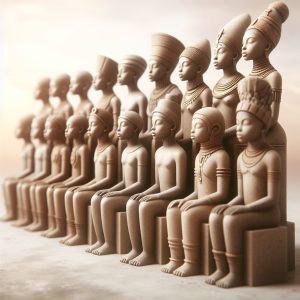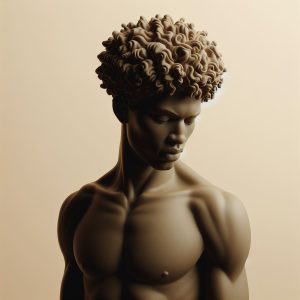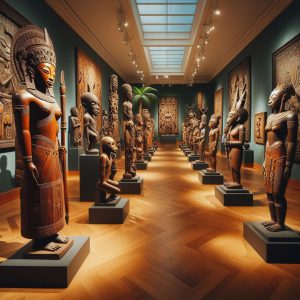The History and Significance of African Statues
African Statues hold deep cultural and historical significance. From ancient times to the modern day, these statues have been created to represent gods, ancestors, kings and queens, spiritual figures, and more. Their designs provide insight into the beliefs, values, and ways of life in various African civilizations over the millennia.
Origins and Early Statues
Some of the earliest known African statues date back to ancient Egypt, with examples like the Great Sphinx statue at Giza created around 2500 BC. Statues played an important role in ancient Egyptian culture and religion, representing gods, pharaohs, and influential figures.
Many West African civilizations also produced statues, like the medieval Nok and Djenne cultures which created terracotta statues of humans and animals. The technically advanced bronze casting traditions of the Kingdom of Benin date back to the 13th century.
Statues for Ceremony and Ritual
Statues have long been central in ceremonies, rituals, and religious practices in African cultures. Intricately carved ritual statues and masks are used in groups like the Bamana and the Baule people of Cote d’Ivoire, with symbolic meanings.
For example, the Kora player statue is used in special ceremonies by the Baule people to represent wisdom, patience, and meditation. These statues may be passed down for generations and are greatly respected.
Where Tradition Meets Modern Art
While ancient African statue-making traditions continue today, there is also an evolution to more modern styles. Contemporary African artists draw on traditional visual arts but incorporate new approaches from Cubism and other Western movements.
Artists may render traditional masks, statues, and human forms with vivid colors, exaggerated features, and avant-garde shapes. The blending of old and new makes modern African statue art innovative and striking.
Preserving Cultural Heritage
Many major museums now exhibit collections of historical and contemporary African statues to celebrate these creative traditions and provide education.
Exhibits like the Met Museum’s “Eternal Ancestors: The Art of the Central African Reliquary” showcase how spiritual statues protect cultural memory. The more this artistic heritage is preserved, studied, and shared worldwide, the better protected it is.
Where to View African Statues
Some top museums to view collections of historical and modern African statue art include:
- British Museum – Over 200 Benin bronzes and other West African statues
- Metropolitan Museum of Art – Extensive African art galleries with diverse statues
- Musée du quai Branly, Paris – Traditional ritual African statues and masks
- Museum of Fine Arts, Boston – “Figures of Power” exhibit with rare African statues

Exploring how African statues uniquely distill cultural values, history, and creativity provides a powerful perspective. Their enduring existence continues to tell ever-evolving stories across the generations.
Frequently Asked Questions on African Statues
- Why were statues important in ancient African cultures? Statues played vital ceremonial and religious roles in many ancient African civilizations, representing gods, kings, ancestors, and spiritual concepts. They were used as symbolic conduits to the spirit world in rituals and festivals.
- What materials are commonly used to create traditional African statues? Terracotta, wood, bronze, and ivory are some typical materials used in African statue making, chosen for properties relating to traditions and availability locally. More modern statues use additional metals, stone, and recycled materials.
- How are contemporary African statues combining old and new art styles? Many modern African artists blend classical African visual arts with Cubism, Surrealism, and other Western approaches. This creates innovative works fusing traditional forms or themes with avant-garde colors, shapes, and dimensions.
- Why is preserving historical African art important? Preserving artifact collections protects cultural heritage for future generations and allows the public to understand the symbolism and skilled artistry reflecting African civilizations over the centuries.
- Where are some top museum exhibits to see African statue art? Great museums to view African statues, masks, and artifacts include the British Museum, the Met Museum, the Musée du quai Branly in Paris, and Boston’s Museum of Fine Arts among others.
References
- Ezra, K. (1992). Royal Art of Benin: The Perls Collection. The Metropolitan Museum of Art. https://www.metmuseum.org/art/metpublications/Royal_Art_of_Benin_The_Perls_Collection
- LaGamma, A. (2000). Art and Oracle: African Art and Rituals of Divination. The Metropolitan Museum of Art. http://www.metmuseum.org/art/metpublications/Art_and_Oracle_African_Art_and_Rituals_of_Divination
- Quai Branly Museum. (n.d.). The traditional African art collection. https://www.quaibranly.fr/en/collections/all-collections/african-collection/





